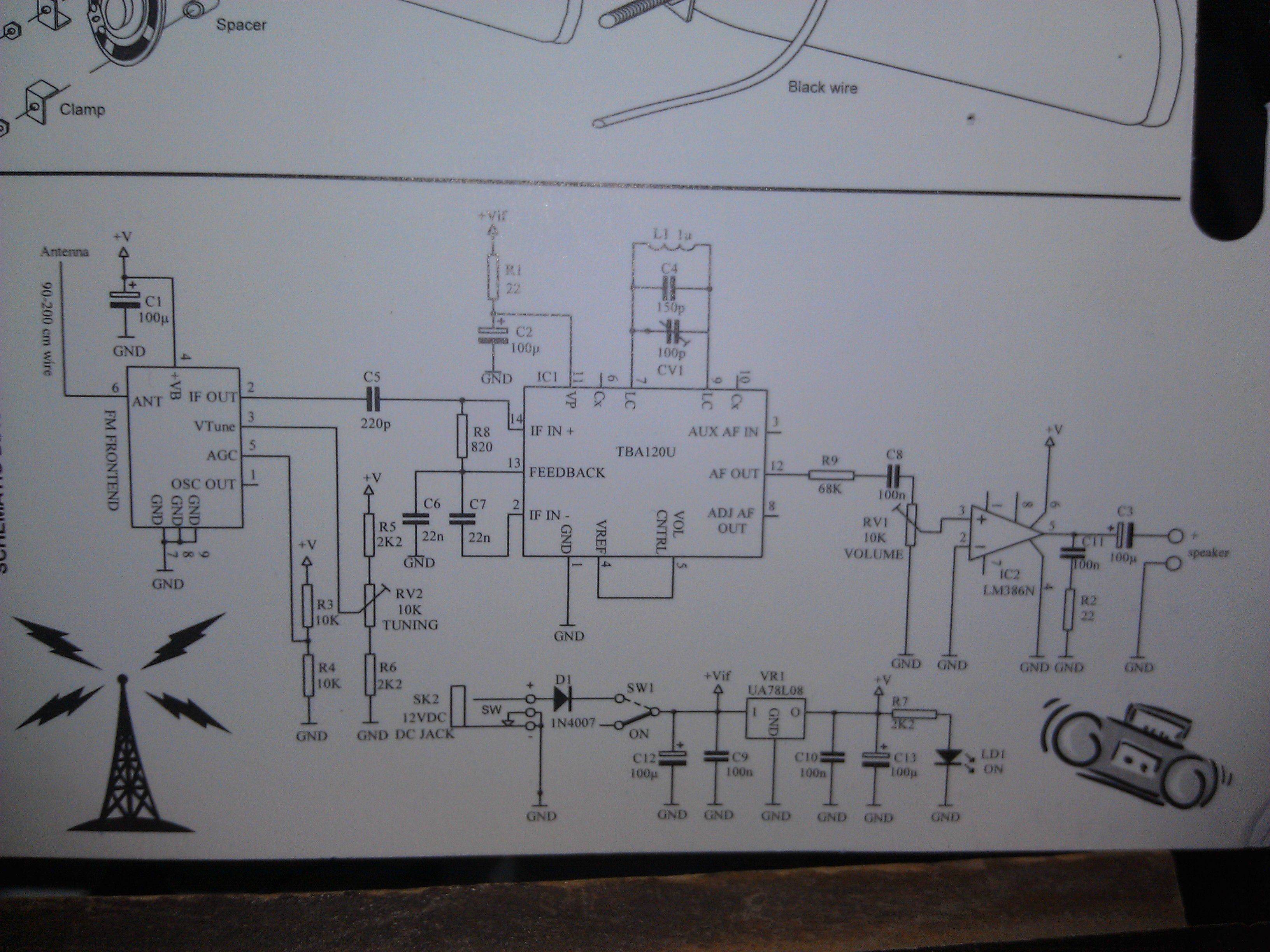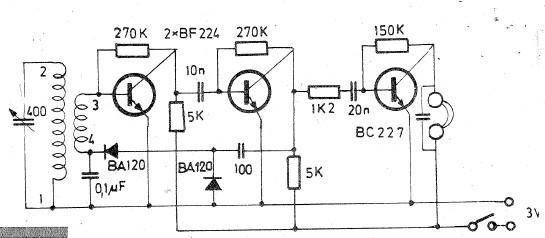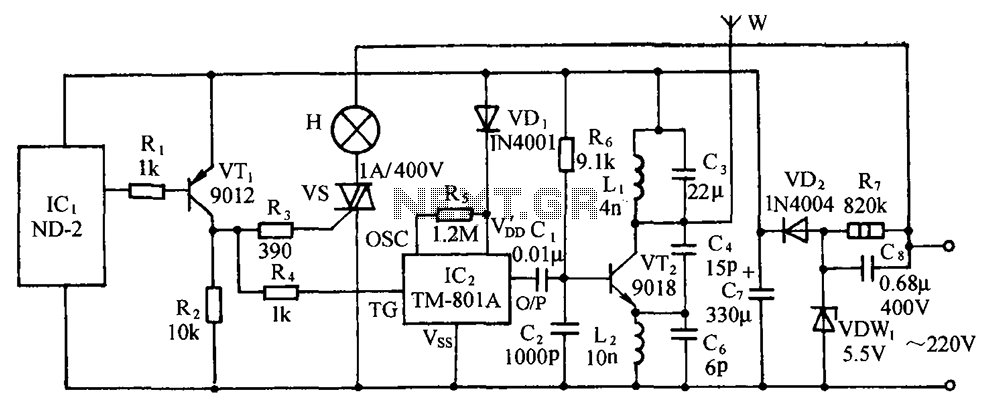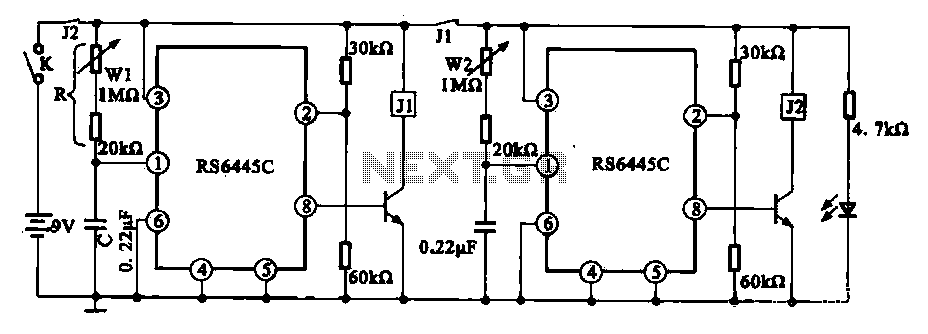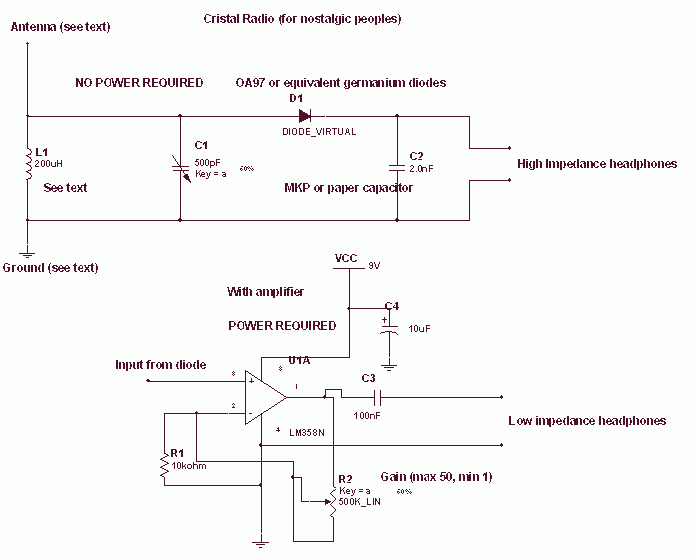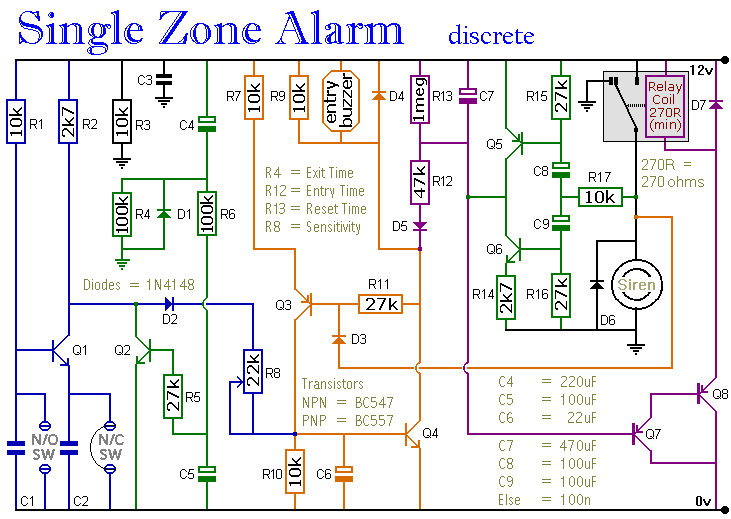
Block Transistor Radio
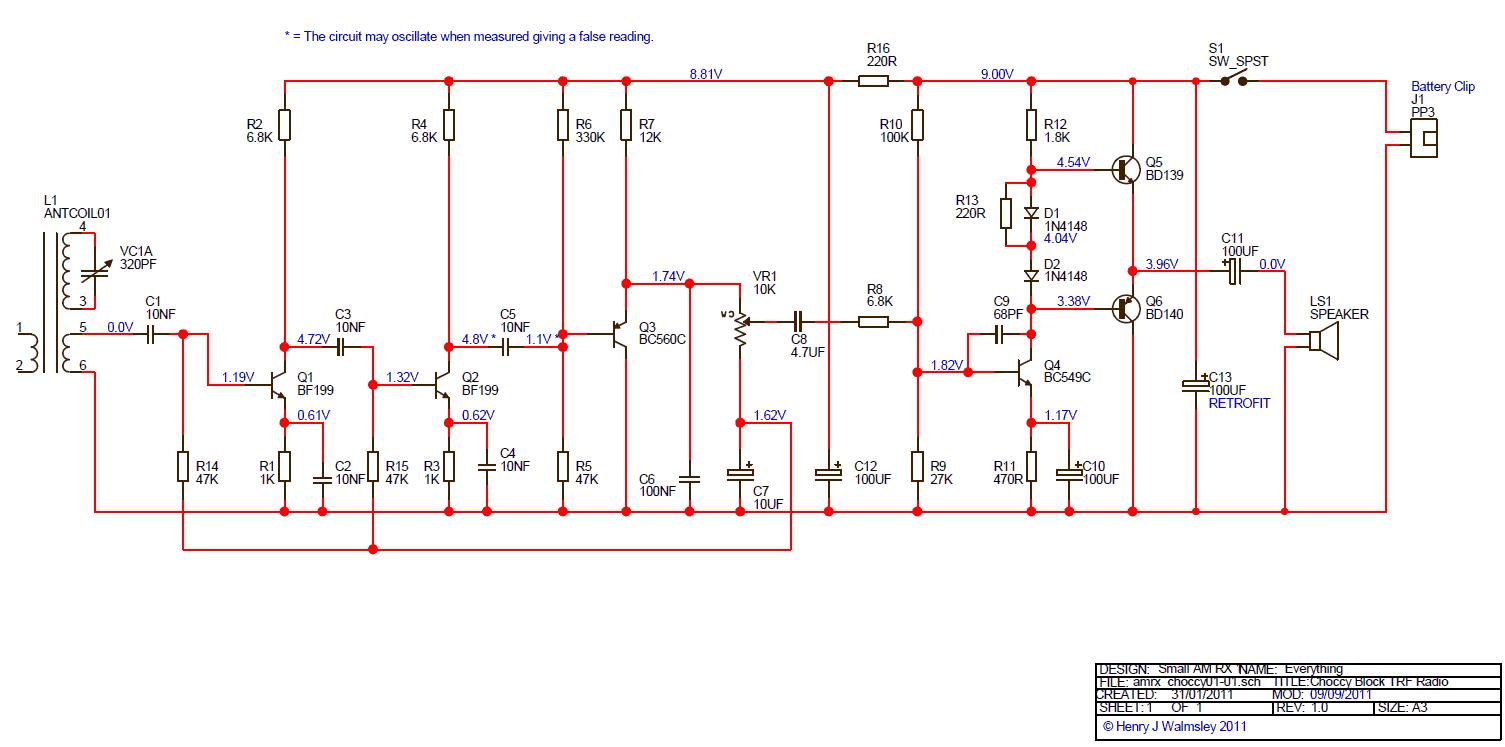
For those seeking a quicker and simpler build option, the Breadboard Six Transistor Radio Kit is highly recommended, albeit with a slightly different final appearance. This kit is a medium wave (MW) AM transistor radio that can be assembled without soldering, utilizing a 3A terminal strip. It serves as a modern alternative to the 1971 Ladybird Book Radio and performs comparably to some commercially available AM radios. It is advisable to thoroughly review the construction notes prior to beginning assembly. The kit is named the Choccy Block Radio Kit due to the terminal strips resembling chocolate bars. It includes all necessary electronic components, wiring, terminal blocks, knobs, mounting screws, and a cardboard enclosure, with some parts pre-soldered. Basic tools required include a small screwdriver for terminal screws, a fine-point marker pen, small wire cutters for trimming component leads, and a wire stripper, with a craft knife recommended for insulation removal. Additional supplies such as paper, glue, scissors, and sticky tape are also necessary. For optimal functionality, it is recommended to mount the radio in an enclosure once assembled. The provided cardboard container is suitable, although alternative methods may be used. The components list contains links to photographs for identifying different values and leg configurations. Knowledge of resistor color codes is essential and can be found in various resources. While the radio can be constructed by following the images, detailed electronic explanations are also provided. The schematic diagram may appear complex for beginners; however, understanding every detail is not required for successful assembly. The design is intended to function correctly if the instructions are followed closely. Experienced builders will benefit from the schematic as well. Begin by cutting, stripping the ends, and assembling the single core link wires into the terminal strips as illustrated. Each wire should have about 6mm of insulation stripped, ensuring that the terminal strip screw contacts the bare wire. It is recommended that each wire end is secured under a single screw on the entering side of the strip. Initially, tighten the screws gently to hold the wires in place while completing the assembly. While the wires do not need to be shaped exactly as depicted, maintaining a similar arrangement will facilitate later checks. Transistors should be identified, and their legs bent as indicated in the bill of materials (BOM) photographs to fit into the strips. Care should be taken with the diodes, ensuring they are positioned correctly without contact between the metal parts and the transistor bodies. The connection orientation of the diodes and transistors is critical, as indicated by identification letters next to the legs. R8 will require an additional loose terminal block to connect to VR1. Follow this by installing both ceramic disc and electrolytic capacitors, ensuring that electrolytic capacitors (except for the bipolar one) are connected in the correct orientation. As the assembly progresses, care should be taken to prevent capacitor wires from touching.
The Breadboard Six Transistor Radio Kit is designed for ease of assembly and accessibility to hobbyists and beginners in electronics. The use of a breadboard allows for a non-permanent setup, making it ideal for educational purposes and experimentation. The terminal strip connections eliminate the need for soldering, which can be a barrier for those new to electronics. Each component is carefully selected to ensure compatibility and performance, providing a satisfactory listening experience comparable to commercially available AM radios.
The schematic diagram, while initially intimidating, serves as a valuable guide throughout the assembly process. It delineates the connections and relationships between components, which can be particularly useful for those with more experience in circuit design. For novices, the emphasis should be placed on following the visual instructions and ensuring that connections are made correctly, rather than fully understanding the underlying electronic principles at the outset.
The inclusion of a comprehensive parts list with links to images aids in component identification, ensuring that builders can easily locate and verify the correct parts before assembly. This resource is particularly beneficial for those unfamiliar with electronic components and their specifications.
Overall, the Breadboard Six Transistor Radio Kit represents an engaging project that combines practical electronics skills with the satisfaction of creating a functional radio receiver. Proper adherence to the assembly instructions will result in a successful build, providing a rewarding experience for both novice and experienced electronics enthusiasts.If you prefer a version that is quicker and easier to build, but which doesn`t have quite the same final appearance I highly recommend the Breadboard Six Transistor Radio Kit. It is also slightly cheaper. This is a MW AM transistor radio which can be constructed without soldering using 3A terminal strip. It is a modern response to the 1971 Ladybird Book Radio and works as well as some AM radios that you could buy in a shop. It`s best to read right through the construction notes first before starting out. Why is it called a Choccy Block Radio Kit Choccy-Block is the nickname for the terminal strips on which it is constructed, and they look rather like chocolate bars. I supply a kit of all the electronic parts, wire, terminal blocks, knobs, mounting screws and a cardboard enclosure for this design with wires soldered on to some parts where necessary.
I`ve assumed that you have a small screwdriver for the terminal screws, a fine point marker pen, some small wire cutters for trimming the component leads and some means of stripping the insulation from the wire. A craft knife is good for that. You will also need some paper, glue, scissors and sticky tape. It is best to mount up the radio in an enclosure when it is all working. The cardboard container supplied is pretty good to start with, or you might choose to use some other method.
The components list has links to photographs that should allow you to make sense of the different values and to identify which leg is which. You need to know about resistor colour codes and you can find that information in many places. It should be possible to build the radio just by looking at the pictures, but later on I`ve included full electronic explanations.
If those don`t make any sense, don`t let them put you off just building the circuit. The schematic diagram can look a bit daunting to the novice. Don`t Panic. You don`t need to understand it all to make it work. The idea of this design is that if you follow the plan it should work without too much fiddling. Experienced builders will find the schematic diagram helpful as well. Start by cutting to length, stripping the ends and assembling the single core link wires into the terminal strips as shown. Each wire must have the end stripped of insulation by about 6mm so that the terminal strip screw touches the bare wire.
It is best if each wire end is only trapped under one screw on the side which it enters the strip. For now, tighten the screws only very gently, just enough to hold the wires in while you put everything else together. As long as they are in the correct holes, the wires don`t have to be absolutely in the exact shapes shown, but it will make it easier to check everything later on if it`s made just like in the picture.
You can click on the pictures to see a bigger version. Identify the various different transistors and bend their legs as shown in the BOM pictures so that they will fit into the strips. The transistor legs will only bend a few times before dropping off, so it`s best to get it right first time.
Assemble the two diodes in the positions shown, so that the glass bodies are in contact with the transistors but so that the wires are not touching the metal part. The diodes and transistors have to be connected the correct way round as shown by the identification letters next to the legs.
Note that Q4 is connected with the curved side facing upwards and the flat side facing down. You can fit the resistors either way round, but it will be easier to check later if the gold coloured bands are pointing down or to the right. R8 requires an extra loose terminal block to connect it to VR1. In the next stage, fit both the ceramic disc and electrolytic capacitors. With the exception of the bipolar one, the electrolytic capacitors have to be connected the correct way round.
Now that things are getting a bit crowded, you might find that keeping the capacitor wires from touching 🔗 External reference
The Breadboard Six Transistor Radio Kit is designed for ease of assembly and accessibility to hobbyists and beginners in electronics. The use of a breadboard allows for a non-permanent setup, making it ideal for educational purposes and experimentation. The terminal strip connections eliminate the need for soldering, which can be a barrier for those new to electronics. Each component is carefully selected to ensure compatibility and performance, providing a satisfactory listening experience comparable to commercially available AM radios.
The schematic diagram, while initially intimidating, serves as a valuable guide throughout the assembly process. It delineates the connections and relationships between components, which can be particularly useful for those with more experience in circuit design. For novices, the emphasis should be placed on following the visual instructions and ensuring that connections are made correctly, rather than fully understanding the underlying electronic principles at the outset.
The inclusion of a comprehensive parts list with links to images aids in component identification, ensuring that builders can easily locate and verify the correct parts before assembly. This resource is particularly beneficial for those unfamiliar with electronic components and their specifications.
Overall, the Breadboard Six Transistor Radio Kit represents an engaging project that combines practical electronics skills with the satisfaction of creating a functional radio receiver. Proper adherence to the assembly instructions will result in a successful build, providing a rewarding experience for both novice and experienced electronics enthusiasts.If you prefer a version that is quicker and easier to build, but which doesn`t have quite the same final appearance I highly recommend the Breadboard Six Transistor Radio Kit. It is also slightly cheaper. This is a MW AM transistor radio which can be constructed without soldering using 3A terminal strip. It is a modern response to the 1971 Ladybird Book Radio and works as well as some AM radios that you could buy in a shop. It`s best to read right through the construction notes first before starting out. Why is it called a Choccy Block Radio Kit Choccy-Block is the nickname for the terminal strips on which it is constructed, and they look rather like chocolate bars. I supply a kit of all the electronic parts, wire, terminal blocks, knobs, mounting screws and a cardboard enclosure for this design with wires soldered on to some parts where necessary.
I`ve assumed that you have a small screwdriver for the terminal screws, a fine point marker pen, some small wire cutters for trimming the component leads and some means of stripping the insulation from the wire. A craft knife is good for that. You will also need some paper, glue, scissors and sticky tape. It is best to mount up the radio in an enclosure when it is all working. The cardboard container supplied is pretty good to start with, or you might choose to use some other method.
The components list has links to photographs that should allow you to make sense of the different values and to identify which leg is which. You need to know about resistor colour codes and you can find that information in many places. It should be possible to build the radio just by looking at the pictures, but later on I`ve included full electronic explanations.
If those don`t make any sense, don`t let them put you off just building the circuit. The schematic diagram can look a bit daunting to the novice. Don`t Panic. You don`t need to understand it all to make it work. The idea of this design is that if you follow the plan it should work without too much fiddling. Experienced builders will find the schematic diagram helpful as well. Start by cutting to length, stripping the ends and assembling the single core link wires into the terminal strips as shown. Each wire must have the end stripped of insulation by about 6mm so that the terminal strip screw touches the bare wire.
It is best if each wire end is only trapped under one screw on the side which it enters the strip. For now, tighten the screws only very gently, just enough to hold the wires in while you put everything else together. As long as they are in the correct holes, the wires don`t have to be absolutely in the exact shapes shown, but it will make it easier to check everything later on if it`s made just like in the picture.
You can click on the pictures to see a bigger version. Identify the various different transistors and bend their legs as shown in the BOM pictures so that they will fit into the strips. The transistor legs will only bend a few times before dropping off, so it`s best to get it right first time.
Assemble the two diodes in the positions shown, so that the glass bodies are in contact with the transistors but so that the wires are not touching the metal part. The diodes and transistors have to be connected the correct way round as shown by the identification letters next to the legs.
Note that Q4 is connected with the curved side facing upwards and the flat side facing down. You can fit the resistors either way round, but it will be easier to check later if the gold coloured bands are pointing down or to the right. R8 requires an extra loose terminal block to connect it to VR1. In the next stage, fit both the ceramic disc and electrolytic capacitors. With the exception of the bipolar one, the electrolytic capacitors have to be connected the correct way round.
Now that things are getting a bit crowded, you might find that keeping the capacitor wires from touching 🔗 External reference
